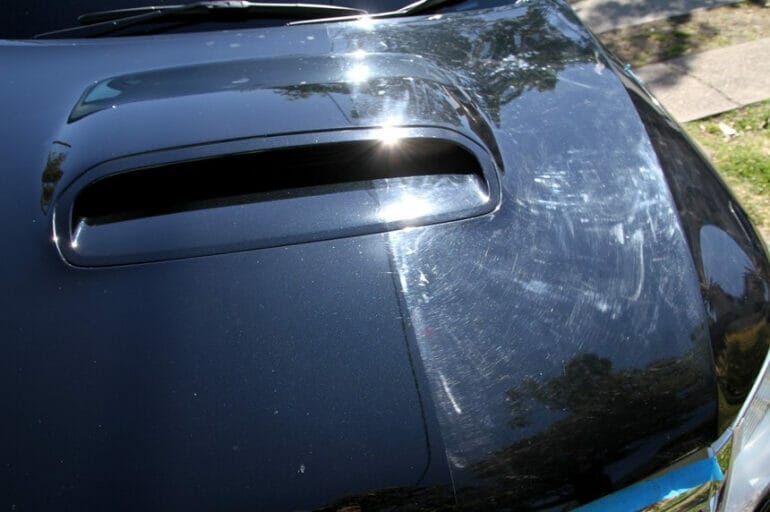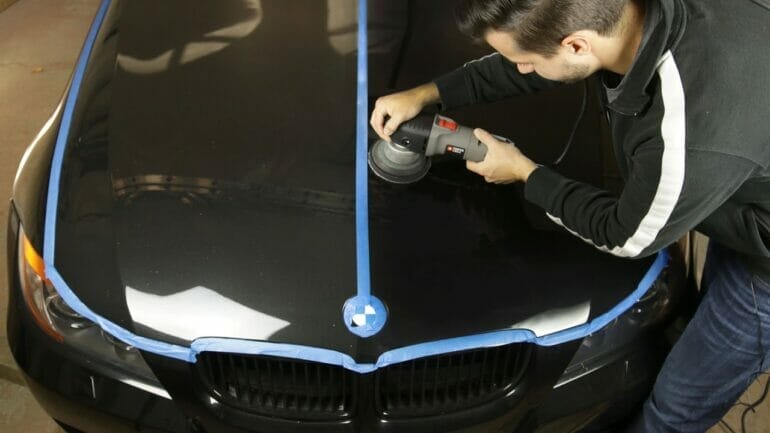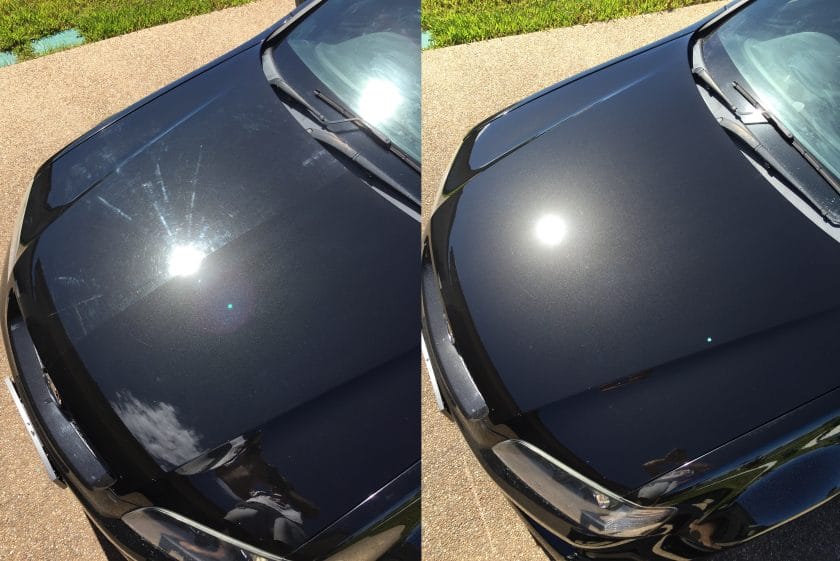If you’re looking to restore your car’s paint to its former glory, a professional paint correction service is the way to go. Whether your car has swirl marks, scratches, or faded paint, a paint correction treatment can rejuvenate its appearance and enhance its value. While the cost of paint correction varies depending on the size and condition of your vehicle, it is a worthwhile investment to achieve a showroom-worthy finish. With the help of skilled technicians and specialized tools, you can expect your car to regain its luster and shine like never before.

Factors Influencing the Cost of Paint Correction for Cars
Paint correction is a process that involves restoring the shine and luster of a car’s paintwork through various techniques. It is a meticulous process that requires skill, time, and the use of specialized tools and products. The cost of paint correction can vary depending on several factors, including:
1. Size and Condition of the Vehicle
The size of the vehicle plays a significant role in determining the cost of paint correction. Larger vehicles, such as SUVs or trucks, typically require more time and effort to complete the process compared to smaller cars. Additionally, the condition of the vehicle’s paintwork can also impact the cost. If the paint has extensive swirl marks, scratches, or oxidation, it may require more intensive correction, which can increase the overall cost.
2. Severity of Paint Defects
The severity of paint defects, such as scratches, swirl marks, or water spots, can influence the cost of paint correction. Minor defects may be easily addressed with a single-stage correction process, while more severe defects may require multiple stages of correction, which can increase the cost. Additionally, if there are deep scratches or areas where the clear coat has worn off, additional steps may be necessary to properly restore the paintwork.
3. Paint Coating Type
The type of paint coating on the vehicle can also impact the cost of paint correction. Different types of paint coatings have varying levels of hardness and durability. Ceramic coatings, for example, are highly durable and provide long-lasting protection but may require additional steps and products to correct and enhance the paintwork, resulting in higher costs compared to other types of coatings.
4. Labor and Skill Level
The cost of paint correction also depends on the labor involved and the skill level of the professional performing the service. Experienced and reputable detailers who have specialized knowledge in paint correction techniques may charge higher rates for their services. The level of expertise and attention to detail can greatly impact the quality of the paint correction results.
5. Additional Services
Additional services that are included in the paint correction process can also affect the overall cost. These services may include paint decontamination, paint protection application, or polishing and buffing to enhance the finish further. The inclusion of these services can vary depending on the detailer or package chosen, and each can contribute to the final cost.
6. Location
The geographical location can also influence the cost of paint correction. Prices may vary between different regions or cities due to factors such as local market conditions, competition, and cost of living. Urban areas or areas with a high demand for automotive detailing services may have higher prices compared to rural or less populated areas.
In summary, the cost of paint correction for cars is influenced by various factors such as the size and condition of the vehicle, the severity of paint defects, the type of paint coating, the labor and skill level required, additional services, and the geographical location. It is essential to consider these factors when seeking paint correction services to ensure you receive the best value for your investment.

Professional Paint Correction Techniques and their Impact on Your Car’s Finish
Keeping your car’s paintwork in pristine condition not only enhances its overall appearance but also helps to maintain its resale value. Over time, your car’s paint can become dull, scratched, or faded due to exposure to the elements, improper washing techniques, or general wear and tear. Fortunately, professional paint correction techniques can restore the beauty and shine of your car’s finish, leaving it looking as good as new.
1. What is Paint Correction?
Paint correction is a meticulous process that involves removing imperfections from the surface of your car’s paintwork. These imperfections can include swirl marks, light scratches, oxidation, water spots, and other blemishes. The goal of paint correction is to restore the clarity, smoothness, and glossiness of the paint, ultimately enhancing the overall appearance of your vehicle.
2. The Process of Paint Correction
The process of paint correction typically involves several steps:
- Inspection: A professional technician will thoroughly inspect the condition of your car’s paintwork to identify the imperfections that need to be addressed.
- Washing and Decontamination: The car is thoroughly washed and decontaminated to remove any dirt, grime, or contaminants that may interfere with the correction process.
- Painstaking Correction: The technician uses various techniques, tools, and compounds to carefully remove the imperfections from the paintwork. This may include machine polishing, wet sanding, or other specialized methods.
- Finishing Touches: Once the correction process is complete, the paint is thoroughly cleaned and sealed to protect the newly restored finish.
3. Benefits of Professional Paint Correction
Opting for professional paint correction offers several benefits:
- Restored Appearance: The primary benefit of paint correction is the restoration of your car’s appearance. The removal of imperfections results in a smooth, glossy finish that enhances the overall look of your vehicle.
- Increased Resale Value: A car with a well-maintained and flawless paintwork will fetch a higher resale value compared to one with visible imperfections. Paint correction helps to preserve the value of your investment.
- Protection: By removing imperfections and applying a protective sealant, paint correction helps to safeguard your car’s paintwork from environmental factors such as UV rays, pollution, and contaminants.
- Long-Term Cost Savings: Regular paint correction can help prevent major paint damage that may require expensive repairs or a full repaint in the future. It is a cost-effective way to keep your car looking its best.
4. Importance of Professional Expertise
While DIY paint correction kits are available on the market, it is highly recommended to seek professional expertise for the best results. Professional technicians have the knowledge, experience, and specialized tools to safely and effectively perform paint correction without causing further damage to your vehicle’s paintwork.
Additionally, professional paint correction techniques often involve the use of high-quality compounds and polishes that are not readily available to the general public. This ensures a superior finish that is long-lasting and resistant to daily wear and tear.
5. Maintaining the Results of Paint Correction
After undergoing professional paint correction, it is essential to adopt proper maintenance practices to prolong the results:
- Regular Washing: Wash your car using a gentle, pH-neutral car shampoo and a soft microfiber wash mitt to avoid introducing new scratches or swirl marks.
- Avoid Automatic Car Washes: Automated car washes can use harsh brushes and chemicals that may damage the paintwork. Opt for hand washing or touchless car washes instead.
- Apply Paint Protection: Consider applying a ceramic coating or paint protection film to further enhance the durability and longevity of your car’s paintwork.
- Keep Your Car Sheltered: Whenever possible, park your car in a covered area or use a car cover to shield it from the elements.
Summary
Professional paint correction techniques can effectively restore the appearance of your car’s paintwork by eliminating imperfections and enhancing its overall shine. By opting for

DIY vs Professional Paint Correction: Pros and Cons
When it comes to restoring the shine and luster of your vehicle’s paint, paint correction is a necessary process. It involves removing swirl marks, scratches, and other imperfections to achieve a smooth and flawless finish. While paint correction can be done either as a DIY project or by hiring a professional, it’s important to understand the pros and cons of each approach before making a decision.
DIY Paint Correction
Many car enthusiasts opt for DIY paint correction as it allows them to have more control over the process and save money on professional fees. Here are some pros and cons to consider:
Pros
- Cost-effective: DIY paint correction can be significantly cheaper than hiring a professional. You can save money on labor costs and only need to invest in the necessary tools and products.
- Flexibility: Doing it yourself gives you the freedom to work on your own schedule. You can take your time and work at your own pace without any external deadlines.
- Learning experience: DIY paint correction allows you to gain valuable knowledge and skills. You can learn about different techniques, products, and equipment, which can be useful for future projects.
Cons
- Steep learning curve: Paint correction requires technical expertise and experience. If you’re new to the process, it can be challenging to achieve professional-grade results without proper training.
- Risk of damage: Without the necessary skills, you may inadvertently cause further damage to your vehicle’s paint. This can result in expensive repairs or the need for professional intervention to fix mistakes.
- Time-consuming: DIY paint correction can be a time-consuming process, especially if you’re not familiar with the techniques. It requires meticulous attention to detail and can take several hours or even days to complete.
Professional Paint Correction
If you prefer to leave the paint correction process in the hands of experts, hiring a professional detailer or painter is the way to go. Here are the pros and cons:
Pros
- Expertise and experience: Professionals have the knowledge, training, and experience to deliver exceptional results. They possess the skills to assess your vehicle’s paint condition accurately and employ the appropriate techniques for optimal correction.
- Time-saving: Hiring a professional saves you time and effort. They have the necessary tools, equipment, and expertise to complete the job efficiently and effectively.
- High-quality results: Professional paint correction often yields superior results compared to DIY attempts. Their advanced techniques, professional-grade products, and attention to detail can result in a flawless and showroom-worthy finish.
Cons
- Higher cost: Professional paint correction comes with a higher price tag. You’ll need to consider the cost of labor, materials, and any additional services (such as polishing or waxing).
- Limited control: When you hire a professional, you hand over control of the process. While this can be advantageous in terms of expertise, some individuals may prefer to have more control over the outcome.
- Dependency on availability: Depending on the demand for professional services, you may need to schedule an appointment and wait for availability. This can be inconvenient if you require immediate paint correction.
Summary
Ultimately, the choice between DIY and professional paint correction depends on your budget, experience, and desired outcome. DIY can be a cost-effective option for those with adequate knowledge and skills, while professional services offer convenience, expertise, and superior results. Consider your priorities and evaluate the pros and cons before deciding which approach suits your needs best.
Maintaining the Results of Paint Correction for Long-lasting Protection and Shine
After investing time and money in paint correction to restore your vehicle’s paintwork to its original glory, it’s important to understand the steps necessary to maintain the results for the long run. Proper maintenance plays a vital role in preserving the paint correction work and ensuring that your vehicle continues to shine with a showroom finish. In this section, we will explore the essential steps and techniques for maintaining the results of paint correction.
1. Regular Washing and Drying
Regular washing is the foundation of proper paint correction maintenance. It is crucial to wash your vehicle on a regular basis to prevent the buildup of dirt, grime, and contaminants that can degrade the finish. Use a gentle car wash soap that is specifically designed for automotive paint and avoid using harsh detergents that can strip away the protective layers.
When washing, start by rinsing the vehicle with a hose to remove loose dirt and debris. Then, using a soft microfiber wash mitt or sponge, gently wash the surface in straight lines to avoid creating swirl marks. Rinse the mitt frequently to prevent dirt from accumulating and scratching the paint. Finally, dry the vehicle thoroughly using a clean microfiber towel or a drying aid to prevent water spots.
2. Regular Waxing or Sealant Application
Applying a protective layer of wax or sealant is essential to maintain the paint correction results. These products create a barrier between the paint and the environment, providing protection against UV rays, oxidation, and contaminants. Waxing or sealing your vehicle every few months or as recommended by the product manufacturer will help keep the paint protected and maintain its shine.
Before applying wax or sealant, make sure the vehicle is clean and free from any surface contaminants. Use a foam or microfiber applicator pad to evenly spread the product across the paintwork. Follow the manufacturer’s instructions for the recommended application and curing time. Once the product has cured, gently buff the surface with a clean microfiber towel to reveal a brilliant shine.
3. Avoiding Environmental Hazards
Protecting your vehicle from environmental hazards is crucial for maintaining the results of paint correction. Exposure to elements such as harsh sunlight, bird droppings, tree sap, and road salt can damage the paint and diminish its shine. Whenever possible, park your vehicle in a shaded area or use a car cover to provide additional protection.
If you encounter bird droppings or tree sap on your vehicle, remove them promptly to prevent them from etching into the paintwork. Use a gentle automotive detailing solution and a soft microfiber cloth to gently lift off the contaminants without damaging the paint. Avoid using abrasive materials or excessive force, as this can lead to scratching.
4. Regular Maintenance Detailing
In addition to regular washing and waxing, it is beneficial to incorporate regular maintenance detailing into your routine. This involves using automotive detailing products to clean and protect specific areas of your vehicle, such as the wheels, tires, and interior. Regular maintenance detailing will help keep your vehicle looking its best and extend the lifespan of the paint correction work.
For wheels and tires, use a dedicated wheel cleaner and tire dressing to remove brake dust, road grime, and enhance their appearance. Clean the interior using appropriate products for different surfaces, such as leather, fabric, or vinyl. Regularly vacuuming, dusting, and conditioning will help maintain the interior’s cleanliness and overall condition.
5. Seeking Professional Touch-ups and Maintenance
While regular maintenance can go a long way in preserving the results of paint correction, there may be instances where professional touch-ups and maintenance are necessary. If you notice any imperfections, scratches, or other damage on the paintwork, it is advisable to seek the expertise of a professional detailer.
A professional detailer can address specific issues and provide specialized treatments to ensure the long-term protection and shine of your vehicle’s paint. They have access to advanced products and techniques that can effectively restore and maintain the results of paint correction.
Summary
Maintaining the results of paint correction requires consistent care and attention. Following a regular washing and drying routine, applying protective wax or sealant, avoiding environmental hazards, incorporating regular maintenance detailing, and seeking professional touch-ups when needed will help keep your vehicle’s paintwork looking flawless and protected for years to come.
Frequently Asked Questions
How much does a paint correction on a car cost?
The cost of a paint correction on a car can vary depending on several factors, such as the size and condition of the vehicle, the level of correction required, and the location. On average, you can expect to pay anywhere from $500 to $1500 for a professional paint correction service.
How long does a paint correction process take?
The duration of a paint correction process depends on the size of the vehicle, the extent of correction needed, and the experience of the detailer. Generally, it can take anywhere from a few hours to a couple of days to complete a full paint correction, ensuring all imperfections are properly addressed.
What are the benefits of getting a paint correction on a car?
A paint correction process can bring several benefits to your car’s appearance. It helps remove swirl marks, scratches, oxidation, and other imperfections, making the paintwork look brand new. It also enhances the depth and gloss of the paint, provides long-lasting protection, and increases the overall resale value of your vehicle.
Conclusion:
In conclusion, a paint correction on a car can greatly enhance its appearance and restore its original shine. Not only does it eliminate surface imperfections such as swirl marks, scratches, and oxidation, but it also provides a protective layer against future damage. A professional paint correction service is well worth the investment, as the skilled technicians use advanced techniques and high-quality products to deliver optimal results. Whether you are looking to sell your car, maintain its resale value, or simply enjoy a flawless finish, a paint correction treatment can rejuvenate your vehicle’s paintwork and make it look brand new. Say goodbye to dull and lackluster paint, and hello to a showroom-worthy finish.
